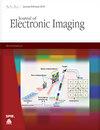SMLoc:空间多层感知引导的相机定位
IF 1
4区 计算机科学
Q4 ENGINEERING, ELECTRICAL & ELECTRONIC
引用次数: 0
摘要
摄像头定位是一种利用摄像头作为传感器输入获取摄像头六自由度的技术。它被广泛应用于增强现实、自动驾驶、虚拟现实等领域。近年来,随着深度学习技术的发展,绝对姿态回归作为一种基于端到端学习的定位方法受到广泛关注。其典型架构由卷积骨干和多层全连接层组成的多层感知(MLP)回归头构建而成。通常情况下,卷积骨干层提取的二维特征图必须经过扁平化处理,然后传入全连接层进行姿态回归。然而,这种操作会导致二维特征图所携带的关键像素位置信息丢失,并对姿态估计的准确性产生不利影响。我们提出了一种名为 SMLoc 的并行结构,利用空间 MLP 分别聚合特征图中的位置和方向信息,从而减少像素位置信息的丢失。我们的方法在常见的室内和室外数据集上取得了优异的性能。本文章由计算机程序翻译,如有差异,请以英文原文为准。
SMLoc: spatial multilayer perception-guided camera localization
Camera localization is a technique for obtaining the camera’s six degrees of freedom using the camera as a sensor input. It is widely used in augmented reality, autonomous driving, virtual reality, etc. In recent years, with the development of deep-learning technology, absolute pose regression has gained wide attention as an end-to-end learning-based localization method. The typical architecture is constructed by a convolutional backbone and a multilayer perception (MLP) regression header composed of multiple fully connected layers. Typically, the two-dimensional feature maps extracted by the convolutional backbone have to be flattened and passed into the fully connected layer for pose regression. However, this operation will result in the loss of crucial pixel position information carried by the two-dimensional feature map and adversely affect the accuracy of the pose estimation. We propose a parallel structure, termed SMLoc, using a spatial MLP to aggregate position and orientation information from feature maps, respectively, reducing the loss of pixel position information. Our approach achieves superior performance on common indoor and outdoor datasets.
求助全文
通过发布文献求助,成功后即可免费获取论文全文。
去求助
来源期刊

Journal of Electronic Imaging
工程技术-成像科学与照相技术
CiteScore
1.70
自引率
27.30%
发文量
341
审稿时长
4.0 months
期刊介绍:
The Journal of Electronic Imaging publishes peer-reviewed papers in all technology areas that make up the field of electronic imaging and are normally considered in the design, engineering, and applications of electronic imaging systems.
 求助内容:
求助内容: 应助结果提醒方式:
应助结果提醒方式:


